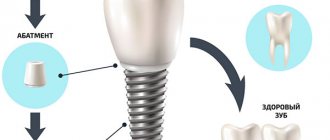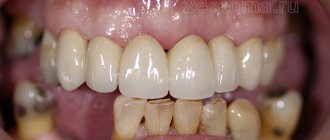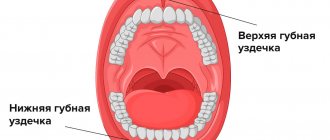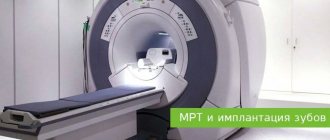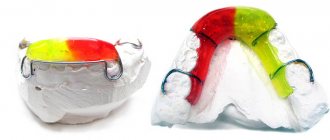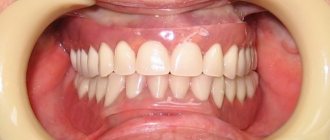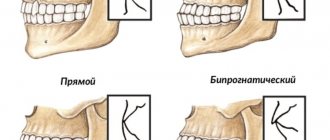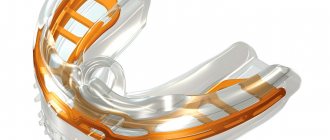S. M. Kochanov Ph.D., CEREC-trainer, dentist
Today, CEREC debunks the myth that increasing the height of the lower third of the face and, accordingly, the bite is a labor-intensive task that can only be accomplished in collaboration with the laboratory. With CEREC equipment, total dental reconstruction with increased bite height can be performed in one visit.
This is possible thanks to the latest software. Options such as smile design, a virtual articulator and the ability to virtually mark tooth contacts make total bite reconstruction an easy and fun task. The presented clinical case describes a technique for increasing the height of the bite in a patient with occlusal wear facets in one visit. The technique described below, I am sure, is not new, and although not described in the literature, it is used by many clinics equipped with CEREC technology. In particular, in the author’s clinic of Tamara Prilutskaya, this technique has been successfully used for several years.
It should be understood that dental reconstruction should be carried out in the absence or subsidence of clinical manifestations of temporomandibular joint dysfunction. And after reinstalling the lower jaw into a new correct position, if necessary, relative to the initial one using, for example, an orthotic, in the future, using CEREC Omnicam, you can simulate a new bite in one visit.
The essence of the application
With an anatomically correct bite, the upper front incisors protrude anteriorly in relation to the lower elements and overlap them by a third. Each chewing unit interacts with two antagonists. The mounds of elements overlap each other.
Several methods are available for correcting pathological occlusion, in particular the installation of permanent crowns.
An artificial crown is a prosthesis that is applied to the prepared surface of a damaged element protruding above the gum tissue.
The purpose of prosthetics is to restore the correct shape, eliminate crowding and speech or chewing defects, and restore the aesthetics of teeth.
Stage IV - dental prosthetics
Prosthetics on an implant, as well as prosthetics of teeth in the lateral sections above and below in a physiological and stable musculoskeletal position of the lower jaw, created all the prerequisites for the correct functioning of the TMJ. Crowns are installed on the teeth on a zirconium dioxide frame.
After dental prosthetics:
Indications and contraindications
Installation of crowns for bite correction is advisable if the patient has certain pathologies:
- Reduced or enlarged elements.
- The presence of defects on the surface of the teeth (chips, damage).
- Curvature or rotation of clinical crowns.
- Increased interdental spaces.
- The top of the unit is completely or partially destroyed.
- Implantation of an implant instead of a removed element.
- Unit divergence.
Covering with crowns does not correct every malocclusion. To eliminate some defects, it is necessary to use other methods that do not require grinding of the support unit.
Prosthetics cannot correct pronounced defects in which the shape and position of the clinical crown and root are disrupted. In such situations, alternative correction methods are used.
It is prohibited to use crowns if the wall thickness of the element is insufficient due to the risk of thermal burn of the pulp.
Stage III - treatment and preparation of teeth for prosthetics
Before dental prosthetics, it is necessary to prepare the teeth so that they do not disturb the patient some time after the installation of expensive structures. To do this, Dial-Dent conducts a thorough diagnosis of the condition of previously treated canals and, if necessary, treats the canals of the teeth under a microscope, guaranteeing maximum service life of the teeth. To create a zone of attached gum, the surgeon performed periodontal manipulation. The hygienist performed gentle teeth cleaning and applied a special product to the front teeth to eliminate hypersensitivity. All these procedures were performed gradually, at a time convenient for the patient, while the dental implant was healing.
Material
The service life and characteristics of the product depend on the material of manufacture. Zirconium oxide structures are characterized by increased strength. Even titanium is inferior to this material in terms of strength.
Products are created from stainless steel, metal alloys, plastics, dental ceramics and combinations of materials.
Steel
Durable, technologically advanced and cheap material. Dental sockets are manufactured by stamping in laboratories or factories. The steel cap is open-forged to a configuration that matches the shape of the unit being restored. A coating of titanium nitride and a layer of ceramic or plastic is applied on top.
Due to low aesthetics, crowns are used on chewing elements.
Metal alloys
Combinations of cobalt, silver, titanium and gold are used. Products from refractory compositions are made by stamping, and from low-melting ones, casting and stamping technologies are used.
Prostheses made of noble metals are characterized by high biocompatibility with body tissues and long-lasting use.
Metal ceramics
A layer of ceramic is applied to the metal base, and the structure is fired in a kiln. The products combine the strength of metal and the aesthetics of ceramic composition.
Ceramics
Metal-free products are made from ceramics. They are highly aesthetic. Almost invisible in the oral cavity. Models made from durable types of dental ceramics are made using sintering, casting or sawing technology.
Metal-plastic
Models consisting of a metal base and a plastic layer. They are distinguished by functionality and aesthetics.
Stages of prosthetics
The procedure requires several visits to the dentist. Initially, the patient is examined, interviewed and examined. The doctor develops a treatment plan. The unit is then prepared. The dentist removes a layer of enamel from the tooth equal to the thickness of the crown wall. Local anesthesia is performed.
An impression of the dentition is taken and sent to a dental laboratory. The dental technician chooses the production technology depending on the type of prosthetic structure.
After making the prosthesis, the doctor fits the structure. Then grinding and polishing is carried out.
The prosthesis is fixed with cement. The stump and surface are first degreased and disinfected. At the last stage, the dentist removes excess cement.
Features of care
Crowns do not require special care. It is enough to observe daily oral hygiene and a gentle diet. It is recommended to get rid of the habit of smoking cigarettes.
Stage I - treatment by an orthodontist and a neuromuscular dentist, osteopathic correction
Orthodontist diagnosis
: deep incisal occlusion, bruxism, increased tooth wear, shift of the midline on the lower jaw to the left, TMJ dysfunction on the left, edentia 35.
Neuromuscular dentist diagnosis
: dysfunction of the masticatory muscles and temporomandibular joints.
Before fixing the braces, neuromuscular dentist A.V. Using a myograph, Galeev determined the physiological and stable musculoskeletal position of the lower jaw. To normalize the bite, the existing height of the lower teeth is not enough, so to fix the position of the lower jaw found using a myograph, the doctor made a removable orthotic. The doctor will monitor, analyze and correct the resulting position until the dental system adapts (usually 2-3 months, it is impossible to give exact dates, since all people have different adaptation capabilities).
Below is a photo of the patient before the start of treatment, and with a removable orthotic on her teeth - the bite is “raised”, the contours of the face have become more harmonious, the nasolabial folds have been smoothed out:
After fixing the correct position of the lower jaw, the orthodontist begins the work. Along with the orthodontist, the patient is treated by an osteopathic doctor.
Diagnosis by osteopath A.I. Popova: descending type of osteopathic disorders caused by malocclusion.
Damon braces are fixed to the teeth of the upper jaw. The goals of treatment at this step are to straighten the upper teeth and normalize the shape of the upper dentition. Braces have not yet been installed on the teeth of the lower jaw, since the orthotic is in the adjustment stage as the position of the upper teeth changes. After stabilizing the position of the upper teeth, the removable orthotic will be replaced with a fixed one, and then braces will be installed on the lower teeth.
After 9 months, the orthodontist fixed braces on the teeth of the lower jaw. Before this, the removable orthotic was replaced with a non-removable one.
In the area of the missing 35th tooth, a spring is installed on the bracket system to expand the gap:
After 4 months, the place for prosthetics is almost prepared.
Orthodontic treatment lasted 1 year 9 months. The bite is normalized, a place for prosthetics has been created, clicks and pain in the TMJ have stopped.
The osteopath performed 10 sessions during the orthodontic treatment. The main directions of correction are relieving excess tension from the bones of the skull, muscles of the neck, face, chewing muscles, adapting the body to changes in the position of the lower jaw, and strengthening the correct functioning of the muscles. Osteopathic correction makes the results of bite correction more stable.
Consequences of malocclusion
What does it mean to a person? What are the consequences of malocclusion?
Occlusion is the state of the teeth coming together. With the correct bite, the closure is carried out tightly, which allows you to grind food finer and chew better.
The beauty of a smile is extremely important for any person. It is accepted among scientists that beauty determines the harmony of soul and body and is the main sign of health. An open and wide smile is the key to success both in business and in victories in your personal life.
If teeth are not a matter of embarrassment, but a reason for pride and confidence, then many possibilities of a commutative nature are revealed to a person.
And, on the contrary, not completely closing the teeth is not only unsightly. If the bite is incorrect, poorly chewed food can lead to disruption of the digestive system. Bite deformation does not allow for complete cleaning of the oral cavity; this provides an additional environment for the development of harmful bacteria, creating preconditions for the development of caries and unpleasant odors from the oral cavity.
The listed shortcomings and problems lead to restrictions in communication and the development of uncertainty, to social self-isolation. In such a situation, there is no point in talking about the level of happiness or success.
In order not to repel people with complexes and not to cause unpleasant associations, you need to take care of an open smile, decorated with an even row of snow-white teeth, and tune in to serious changes that will become feasible when visiting a dental office.
General information
Modern dentistry offers many solutions for correcting occlusal disorders. These include metal braces, aesthetic structures made of artificial sapphires and ceramics, aligners, aligners, trainers, and plates.
With slight curvature of the dental unit, a positive result is achieved with the help of microabrasion, by grinding down hard tissues, as well as with the help of composite restorations and artistic extensions.
For minor deformations affecting single frontal teeth, the situation is corrected with the help of crowns.
Our specialists
Akhtanin Alexander Pavlovich
Orthopedic dentist, implantologist
Experience 35 years
Chief physician of the clinic, Implant Specialist (Boston, USA). He has been installing implants since 1996.
Akhtanin Evgeniy Alexandrovich
Dental surgeon, implantologist
13 years of implantation experience
Certified Straumann Young Professional. Member of the international association of implantologists ITI.
Akhtanin Alexander Alexandrovich
Orthopedic dentist, implantologist
10 years implantation experience
Member of the international association of implantologists ITI. Trained in Germany at the Charite University Clinic.
